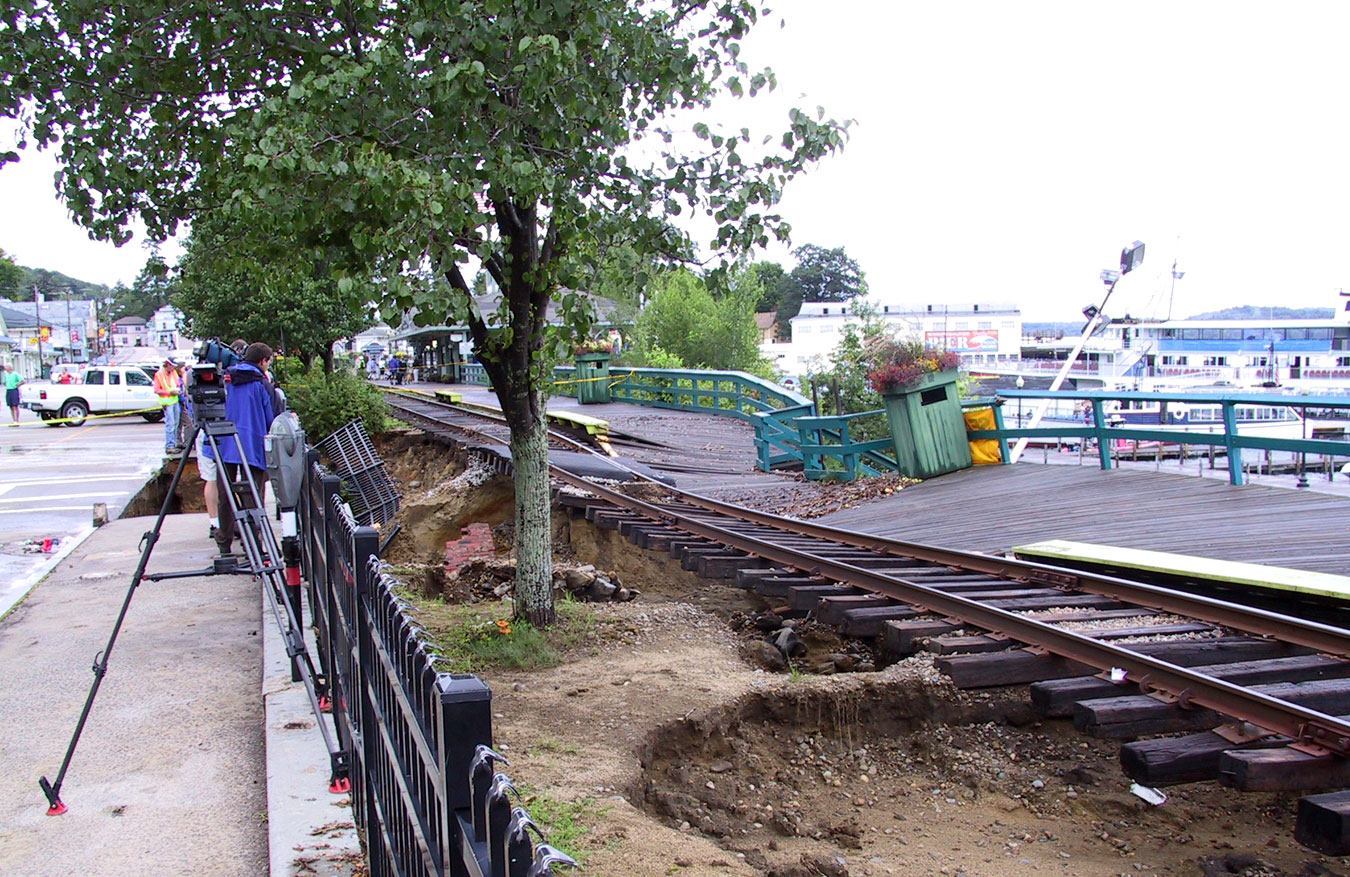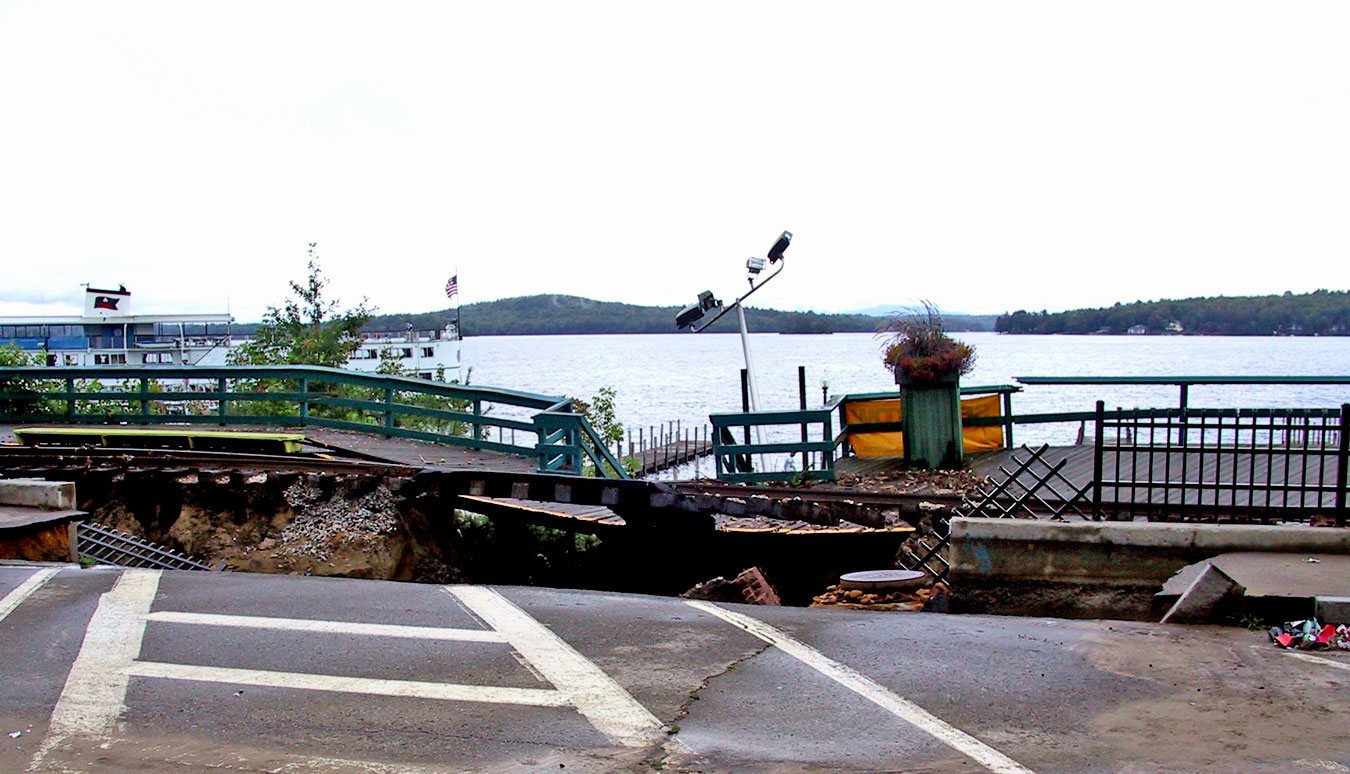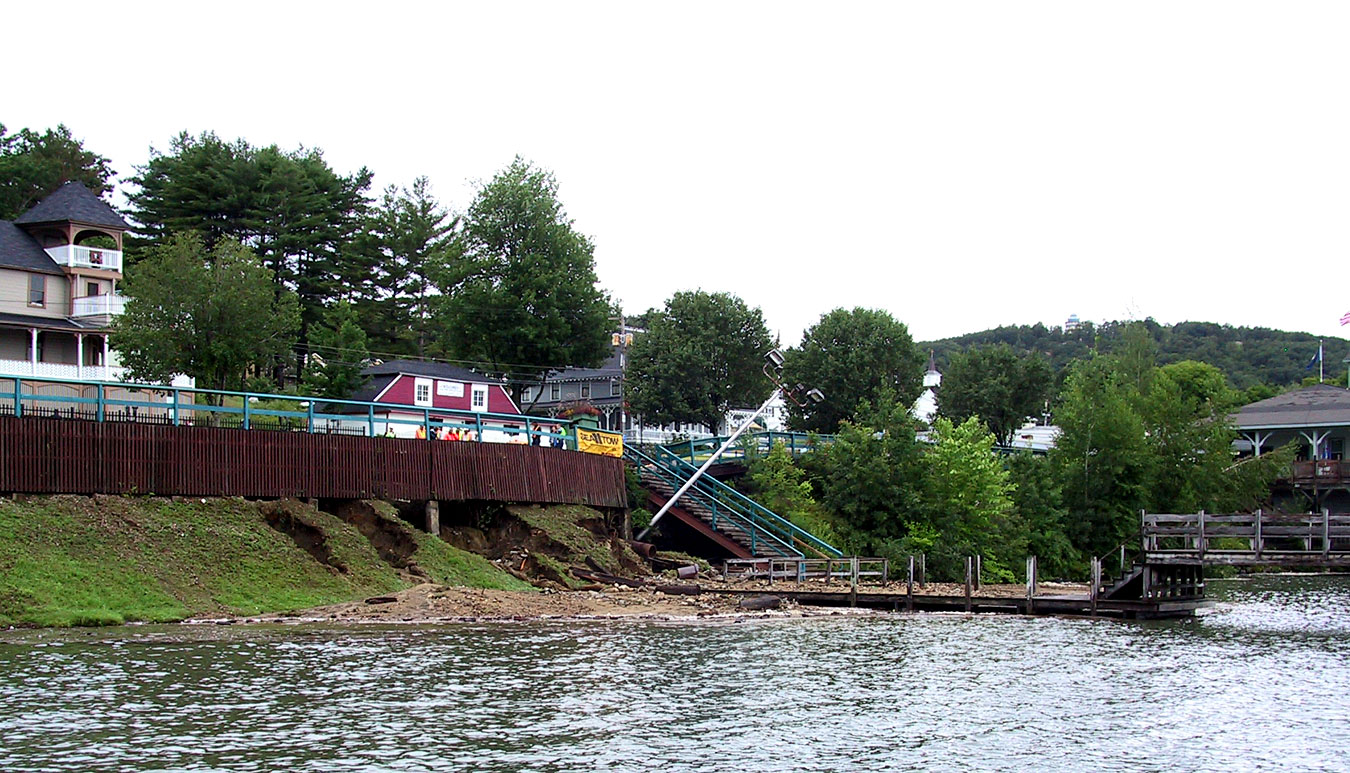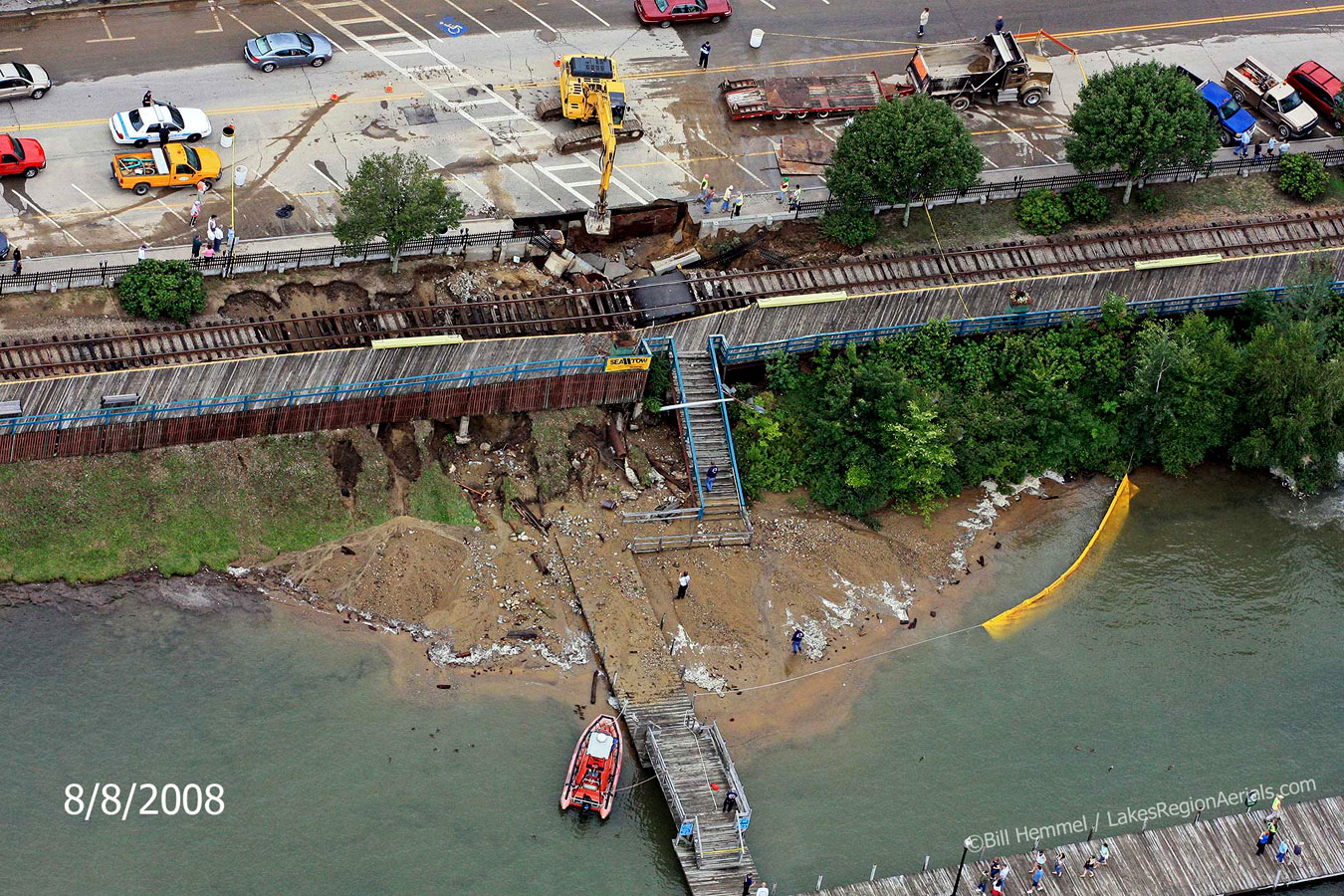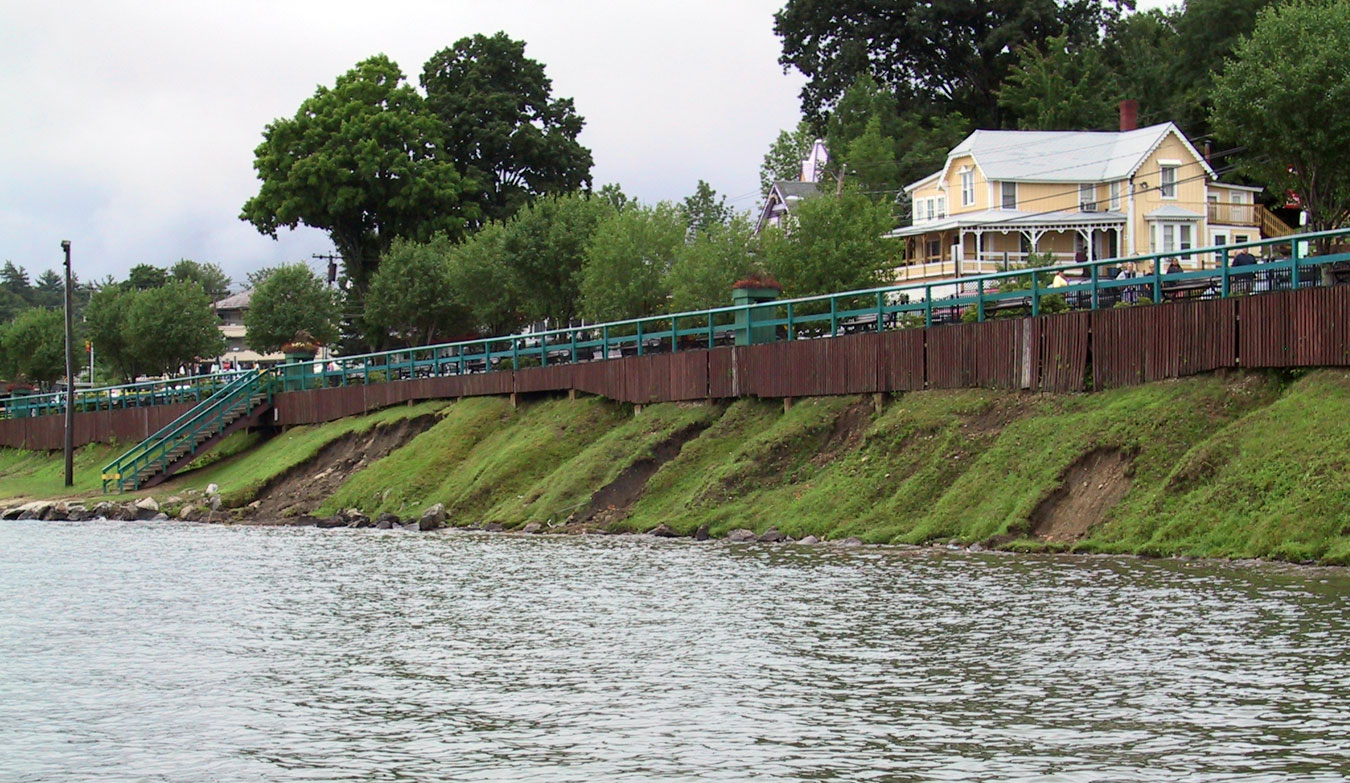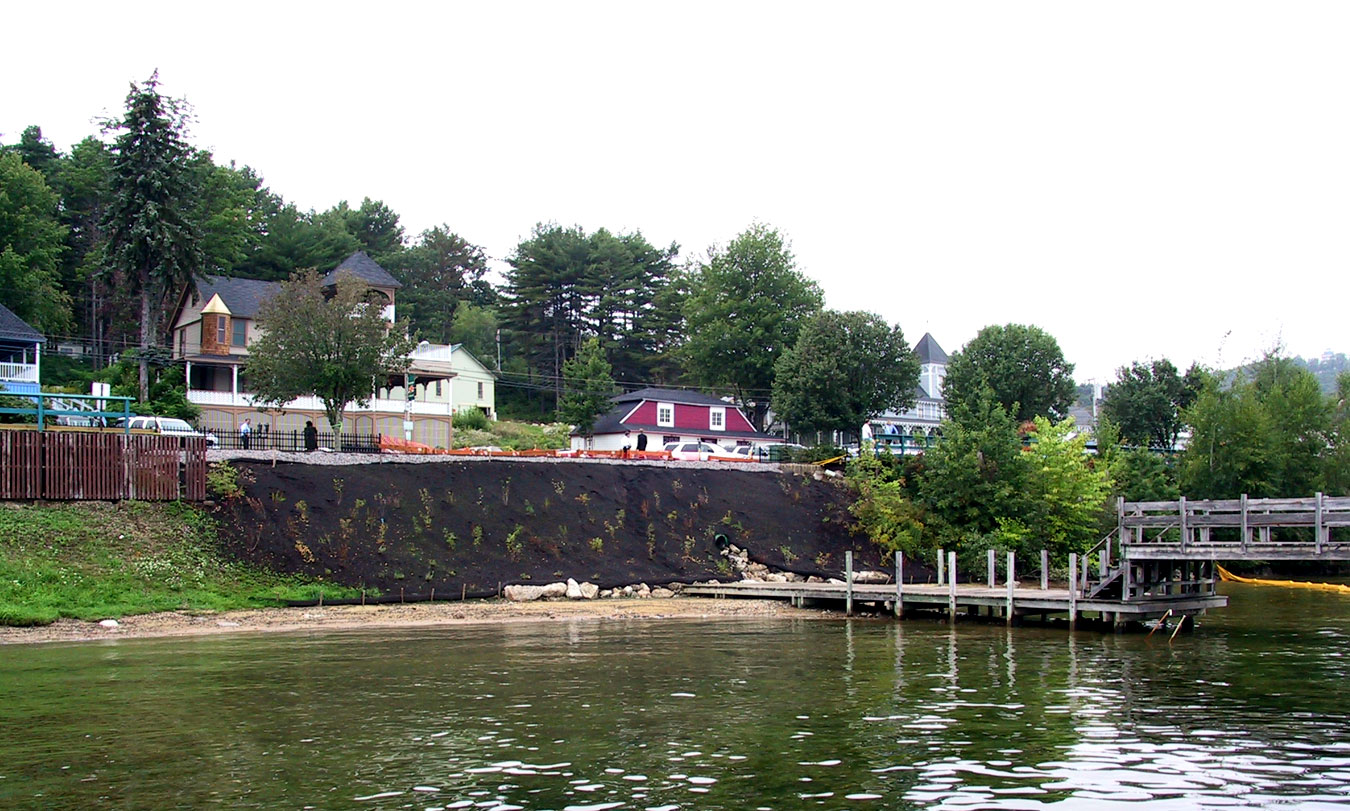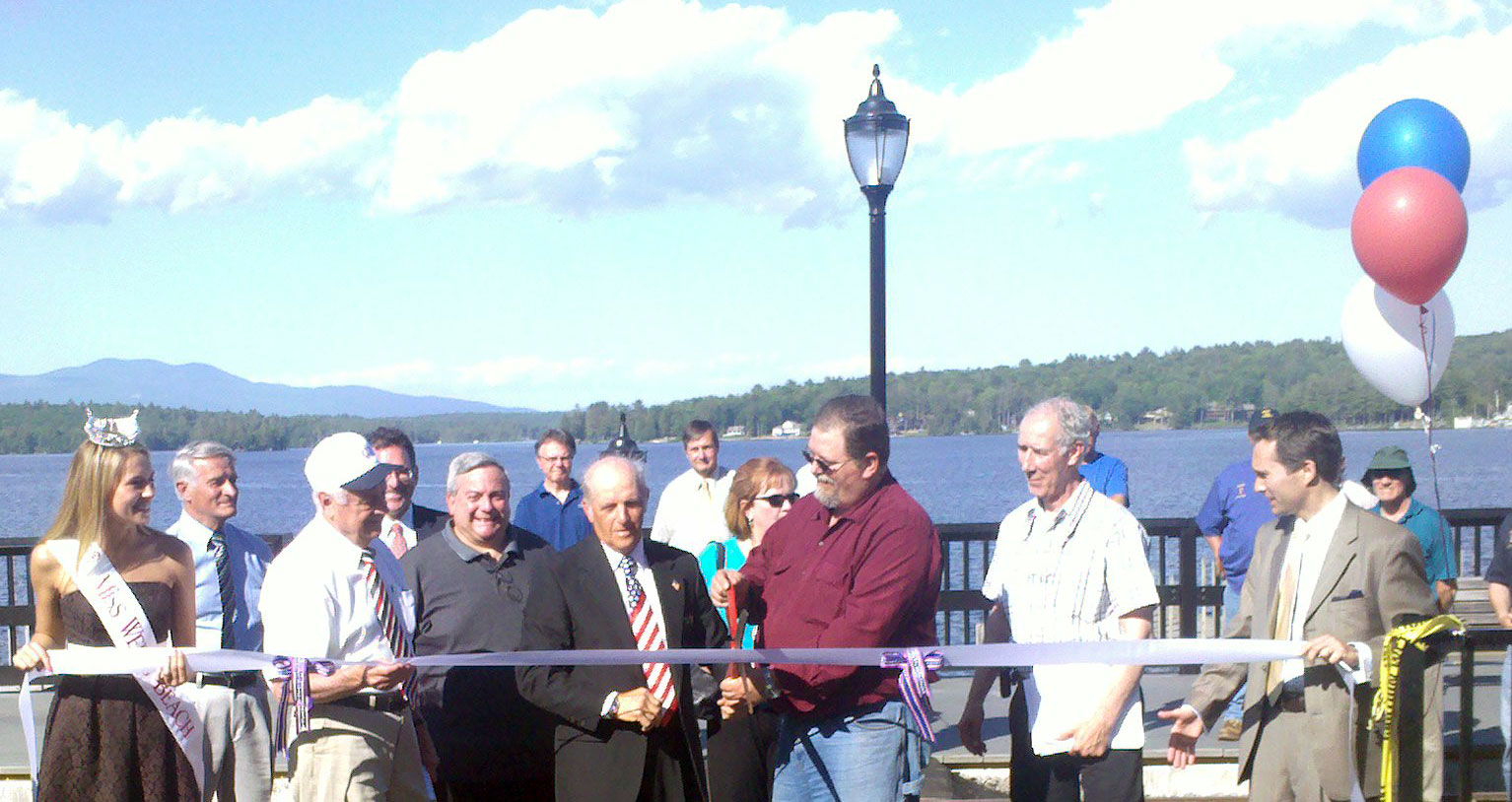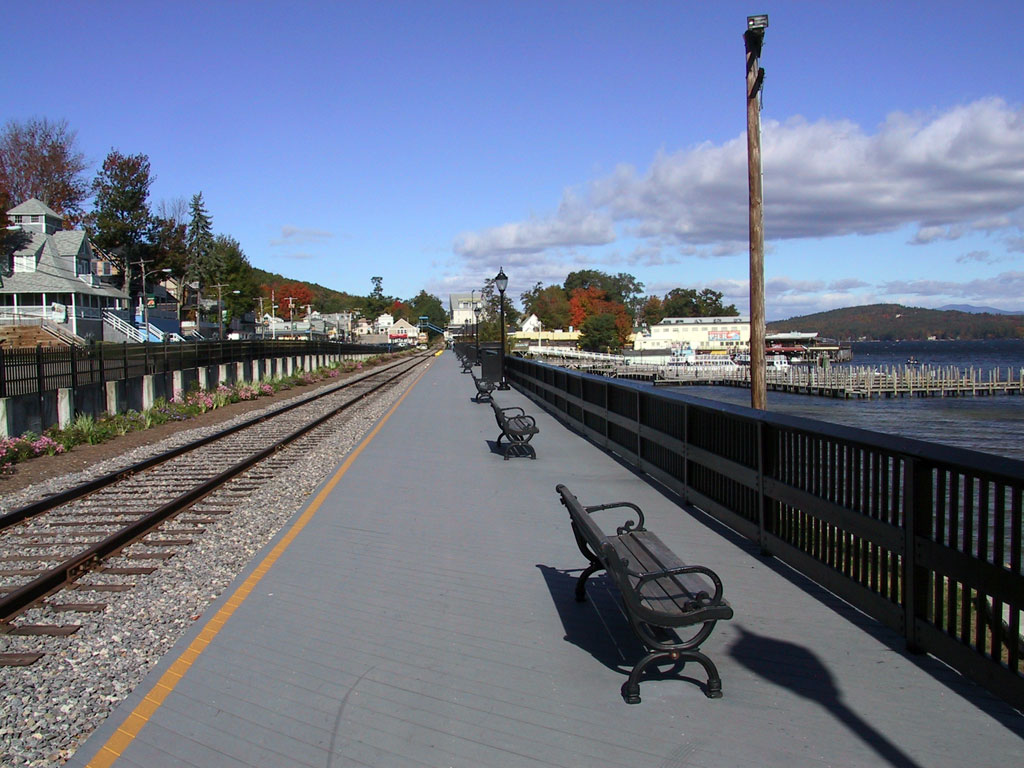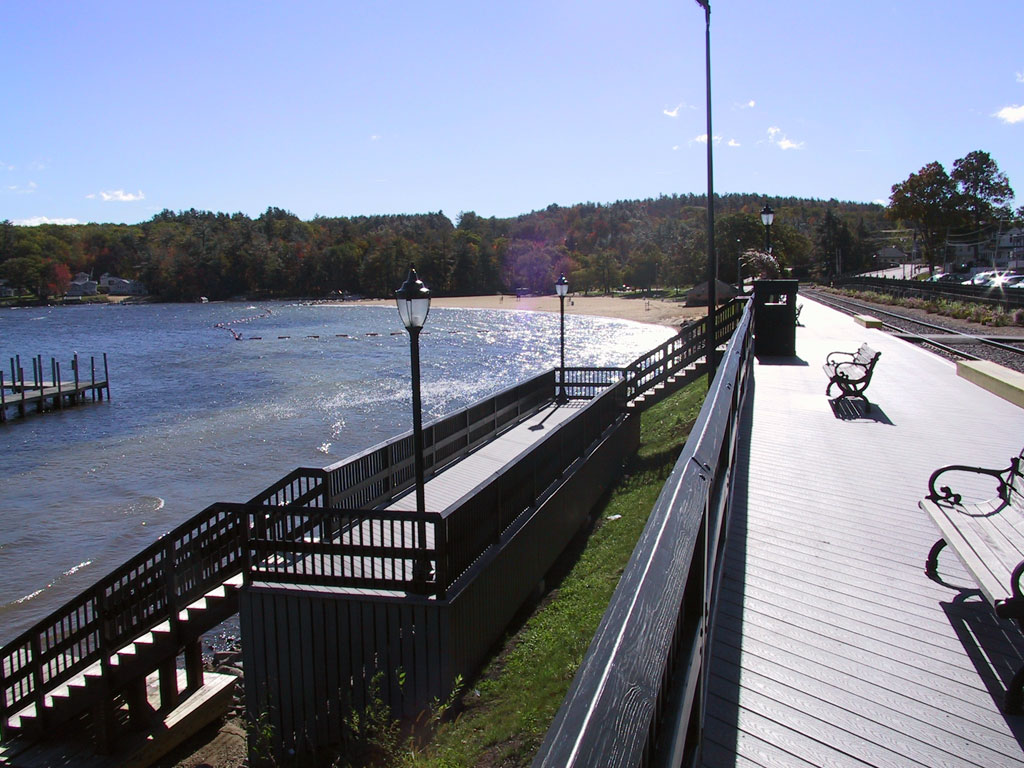Boardwalk Breach
The flood damage to the boardwalk occured between 7pm and 9pm the evening of Thursday, August 7, 2008, when an unrelenting storm front dropped about 4 to 5 inches of rain in a two hour period. These pictures were taken the following morning, August 8, 2008.
By the afternoon of August 8 construction crews were already hard at work on emergency repairs. A 36″ wide regional sewer line that paralleled Lakeside Avenue ran right through the damaged area. The flooding had left the line unsupported from below and in imminent danger of failure. A rupture to the line would have caused an environmental disaster, as raw sewerage would have poured into the Lake. Fortunately, by the following day the line had been secured by the emergency work crews.
The line, known as the “Meredith Interceptor” carries 500,000 gallons per day and is part of the Winnipesaukee River Basin Program. The program was authorized in 1972, construction began in 1976, and the final cost was about $70 million, with about $3 million required in annual maintenance. The Meredith Interceptor, “a main artery for carrying sewerage from Meredith and points along the southerly shore of Meredith Bay to Weirs Beach”, was completed in 1983. The Meredith Interceptor follows alongside the railroad tracks from Lakeside Avenue to the western side of Paugus Bay, then continues onward to Laconia and ultimately to the wastewater treatment plant in Franklin.
Shortly after the end of the boardwalk, the Meredith Interceptor merges with the Gunstock Interceptor from Gilford in the vicinity of the Endicott Rock Park parking lot. A concrete structure marks the exact spot. The Gunstock Interceptor diverges from Route 11B just before the Aquedoctan stone bridge. Passing about 50′ to the north of the bridge, the Gunstock Interceptor crosses 5′ deep underneath the Weirs Channel to the grassy area of Endicott Rock Park.
The City of Laconia’s first sewerage treatment plant began operations in June 1952. Prior to that, raw sewerage was emptied directly into the Winnipesaukee River and Lake Winnisquam. On September 30, 1974, the City authorized the design and construction of a new Weirs Beach sewer collection system. The $870,000 project would cover virtually the entire Weirs Beach area and “…involves construction of a pump station and force mains, as well as the sewer lines.” The new system eliminated the raw sewerage overflow into Lake Winnipesaukee during rainstorm events.
By Thursday, August 28, 2008, in the area where the major damage had occurred, repairs were completed to the railroad bed and the embankment, but not to the boardwalk or the stairway to the public docks.
Funding of the repair project remained an issue. FEMA (the Federal Emergency Management Agency) committed to 75% of the cost of the repair; however, FEMA only funded repairs to the area of major damage to the boardwalk, while the City of Laconia sought additional funding for repairs to the southern section of the boardwalk where minor damage occurred. In addition, the City sought to strengthen the boardwalk in both areas to insure that damage from any future flooding was minimalized. This entailed “new concrete footings and grade beam atop a steel sheet pile wall.” The estimated entire cost of the project as envisioned by city officials was in the range of $1.3 to $1.5 million dollars. The estimates turned out to be correct, and with some state funding and the City paying for the rest, the project was completed over the winter of 2009-2010.
Officially dedication and ribbon cutting ceremony for the boardwalk repair project, on May 27, 2010. Front row, from right to left, is Mayor Mike Seymour, Public Works Director Paul Moynihan, unknown city councilor with scissors, councilor Armand Bolduc, Weirs Action Committee President Thomas Pucci, unknown councilor, Miss Weirs Beach Megan Lyman. Back row, left to right, is councilor Bob Hamel, councilor Henry Lipman, the rest unknown.
Images of the completed project.










